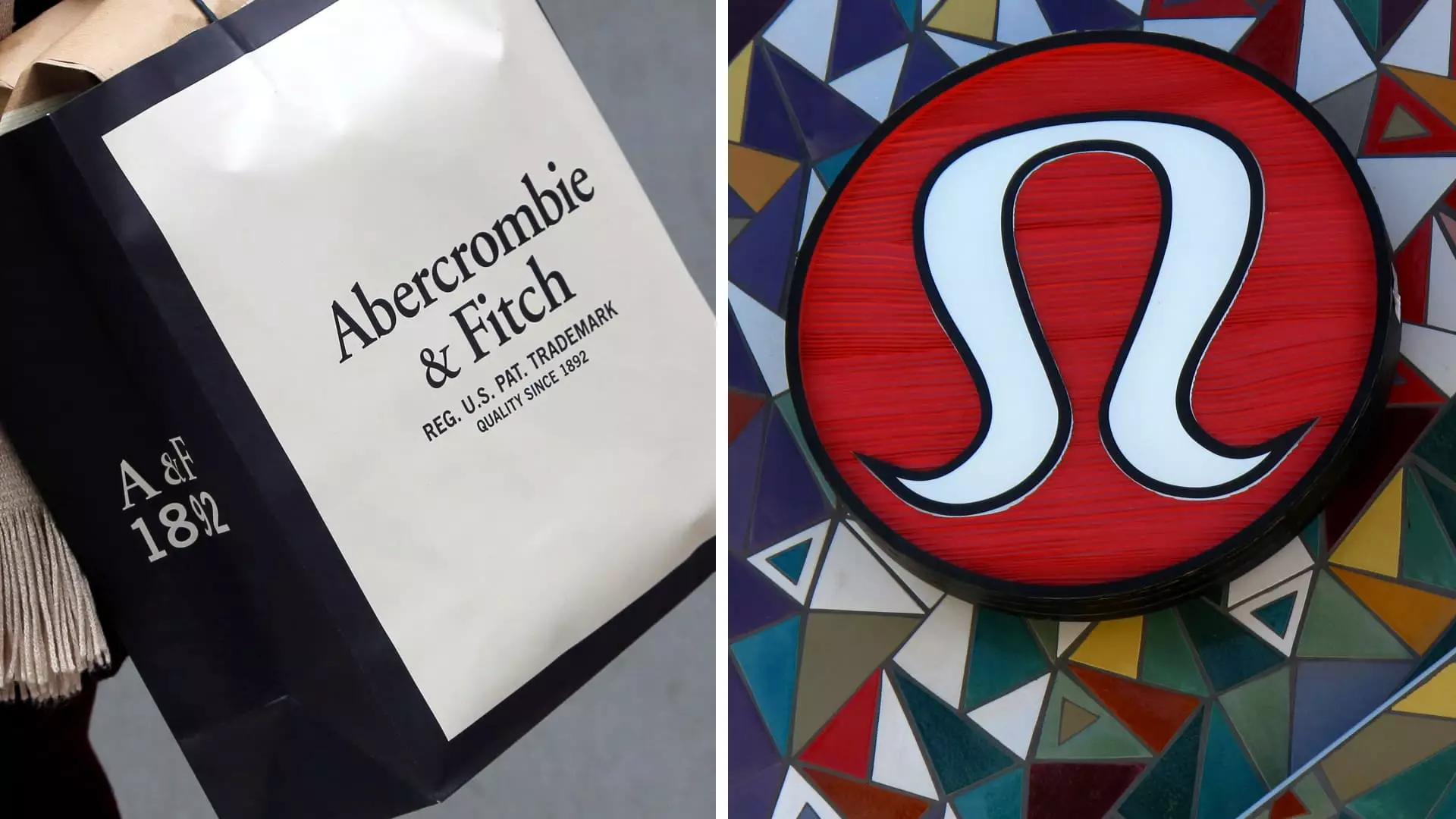As the holiday season draws to an end, a ripple of uncertainty has emerged within the stock market despite promising sales reports from several major retail players. In a surprising turn of events, companies like Lululemon, Abercrombie & Fitch, and American Eagle announced fourth-quarter outlooks that exceeded expectations, but their stock prices experienced declines shortly thereafter. This phenomenon raises questions about market sentiment and investor expectations amid an evolving retail landscape.
Retail giants reported better-than-expected sales performance for the holiday quarter, a period critical to their annual success. Lululemon, in particular, showcased an impressive anticipated sales growth of 11% to 12%, translating to approximately $3.56 billion to $3.58 billion. This figure surpassed its initial guidance, indicating robust consumer interest in its product offerings. Additionally, Lululemon revised its earnings per share forecasts upward, demonstrating not only resilient sales growth but also effective cost management strategies that bolstered profit margins.
Conversely, even with these positive indicators, the market reacted tepidly. Stock shares plummeted, often by more than 5%, leading to confusion. Abercrombie’s situation was even more drastic, with its stock falling about 20%. This stark disparity between sales figures and stock performance may suggest that investor expectations remain excessively high, or that underlying concerns about sustainability are coming to the forefront.
While Abercrombie’s upward revision to net sales forecasts signifies improvement, it also contrasts sharply with its previous year’s stellar holiday sales growth of 21%. Although a more cautious outlook appears justified as the retailer’s growth matures, investors are increasingly wary. The company’s plans to prioritize profits over sheer sales figures moving forward could instigate a shift in stock sentiment, indicating a potential move away from previous exuberance linked to aggressive expansion.
Fran Horowitz, CEO of Abercrombie, emphasizes a strategy focused on sustainable, profitable growth. This communication to investors signals a shift in priorities that reflects broader trends in the retail industry where long-term value is increasingly seen as paramount. As competition intensifies and economic pressures mount, there is a palpable shift from flashy growth metrics to solid, profit-driven strategies that can weather market volatility.
While many retailers reported positive sales outcomes, Macy’s stood out as a notable exception. The department store’s forecast released ahead of the annual ICR conference painted an unflattering picture for its performance, with expectations indicating sales will hover at or just below previously stated ranges of $7.8 billion to $8.0 billion. Such an outlook can negatively impact investor confidence and highlights the challenges faced by traditional department stores that continue to grapple with shifting consumer behaviors in an e-commerce heavy environment.
Urban Outfitters, meanwhile, celebrated notable growth with an overall revenue increase of 10%. However, the company also demonstrated vulnerability, as sales faltered within its Urban Outfitters brand compared to its more successful subsidiaries, Anthropologie and Free People. This signals a potential need for Urban Outfitters to reassess its brand positioning in a competitive market where consumers are becoming more selective.
Looking Ahead: Retail Trends in a Post-Pandemic World
While the holiday retail season began with tempered expectations, early readings reflect a more promising outlook, with a reported annual growth rate of 3.8% in U.S. retail sales between November 1 and December 24. The National Retail Federation’s modest forecast of 2.5% to 3.5% growth reiterated a cautious optimism, as inflationary pressures loom large, potentially undermining true consumer spending power.
As retailers pivot to meet changing consumer demands, an emphasis on e-commerce and agile supply chain management is becoming critical. Future success may hinge on how effectively these companies can navigate emerging challenges while adapting their business models to prioritize both customer experience and financial sustainability.
While some retailers are celebrating better-than-expected sales, the mixed stock performance highlights an ongoing need for adaptability and foresighted planning. It is clear that investor sentiment remains unpredictable, and as retailers head into a new fiscal year, their ability to foster sustainable growth will be put to the test.

